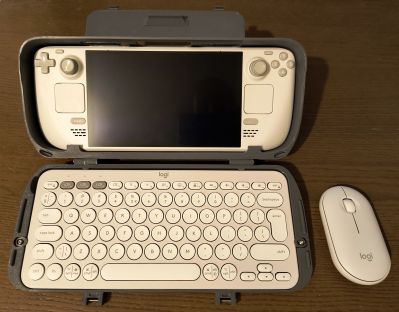You know what the worst thing about the Steam Deck is? Being able to play your games on the go. Wouldn’t it be better if it was a screenless brick that lived under your TV? Well, maybe not, but at least one person thought so, because [Interfacing Linux] has created the GeekDeck, a Steam OS console of sorts in this video embedded below.
The hack is as simple as can be: he took a GEEKOM A5, a minicomputer with very similar specs to the Steam Deck, and managed to load SteamOS onto it. We were expecting that to be a trial that took most of the video’s runtime, but no! Everything just… sorta worked. It booted to a live environment and installed like any other Linux. Which was unexpected, but Steam has released SteamOS for PC.
In case you weren’t aware, SteamOS is an immutable distribution based on Arch Linux. Arch of course has all the drivers to run on… well, any modern PC, but it’s the immutable part that we were expecting to cause problems. Immutable distributions are locked down in a similar manner to Mac OS (everything but /home/ is typically read-only, even to the superuser) and SteamOS doesn’t ship with package manager that can get around this, like rpm-ostree in Fedora’s Silverblue ecosystem. Actually, if you don’t have a hardware package that matches the SteamDeck to the same degree this GEEKOM does, Bazzite might be a good bet– it’s based on Siverblue and was made to be SteamOS for PC, before Steam let you download their OS to try on your PC.
Anyway, you can do it. Should you? Well, based on the performance shown in the video, not if you want to run triple-A games locally. This little box is no more powerful than the SteamDeck, after all. It’s not a full gaming rig. Still, it was neat to see SteamOS off of the ‘deck and in the wild.
Usually we see hacks that use the guts of the SteamDeck guts with other operating systems, not the other way around. Like the Bento Box AR machine we liked so much it was actually featured twice. The SteamDeck makes for a respectable SBC, if you can find a broken one. If not, apparently a Chinese MiniPC will work just as well.
Continue reading “GEEKDeck Is A SteamDeck For Your Living Room”


















